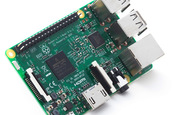This article is more than 1 year old
Take your pick: Linux on Windows 10 hardware, or Windows 10 on Linux hardware
We can't see the Arm in having a little tinker
Enthusiasts with time and hardware on their hands have a few extra options for the weekend. One committed group of Linux fans has got Ubuntu working on a Windows Arm laptop, while Pi fans have made it easier to bring full Windows 10 to the diminutive computer.
Pi fans get the full Windows 10 experience
Windows 10 IoT Core has been available for the Raspberry Pi for a few years now, with releases of the OS available for the Pi 2 and Pi 3.
However, IoT Core just doesn't cut it for users seeking that full Windows 10 desktop experience on their little computers.
With the arrival of the Arm version of Windows 10, enthusiasts have been working, with varying degrees of success, at getting the OS up and running on Pi hardware.
Some hardy souls managed to get the thing functioning in 2018, but with some pretty severe limitations. Iffy or non-existent drivers meant that services like Wi-Fi or Ethernet were sadly absent, making the thing more a curiosity than anything else.
A very slow curiosity at that.
Things changed this week, with the advent of some updated drivers and a hugely streamlined installation process. On the driver front, the issues I encountered (notably wobbly USB support) appear to have been resolved with properly ported drivers meaning the Ethernet port should now work along with external drives and a wider range of input devices. The onboard Wi-Fi, alas, remains borked.
The code can be picked up from GitHub, and is from the same team that emitted an installer to boot the Windows 10 desktop on Microsoft's abandoned Lumia 950 phones. There are also more user-friendly instructions here.
You'll need a Pi 3 Model B or B+ and a fair amount of luck to make it work (although less than that needed for earlier versions). However, aside from the fun factor of seeing what a Pi can be persuaded to do, those seeking only a $35 way of running Windows rather than an adventure in technology might be better off looking elsewhere.
The Pi was, after all, not really designed with the full-blown Windows 10 desktop in mind.
Want to put some sparkle in that Windows 10 on Arm laptop? Try Ubuntu instead
It is fair to say that the first batch of Windows 10 Arm laptops did not set the world alight. Although possessed of impressive battery life, the Windows On Snapdragon (WOS) devices, as Qualcomm prefers to call them, were hardly speed demons.
As if to demonstrate that anything Windows can do, Linux can do a bit worse, there are reports of an effort to coax Ubuntu onto the machines.
At this point it is worth noting that Windows 10 on Arm includes the Windows Subsystem for Linux. As such, battling through the installation as it stands today is really something only for those keen to see what other uses their hardware can be put to, or users keen to help out with testing or development of the project.
Or those that respond to every new device announcement with "Can I install Linux on it?"
Hardy souls keen to see Ubuntu booting natively on one of the three supported devices (the HP Envy x2, Lenovo Mixx 630 or Asus NovaGo) can flash an SD card with a prebuilt image and maybe, just maybe, see the Linux OS splash screen as things start up.
What they won't see, however, are minor things like, er, Wi-Fi support or access to the onboard storage. 3D acceleration is right out.
The limitations make the project a curiosity at present and, to be frank, you could stick a Pi into a laptop shell to get that whole Arm Linux laptop experience.
However, while Windows 10 on Arm has struggled to persuade developers to port their Win32 applications over to the platform (leaving users faced with sluggish performance as the emulation does its best), Arm on Linux has been a thing for some time, with many open-source apps ported over.
Thus no emulation is needed, and once the project has dealt with some of the more glaring hardware omissions, running Linux on the thing could well end up being the more snappier alternative. ®

